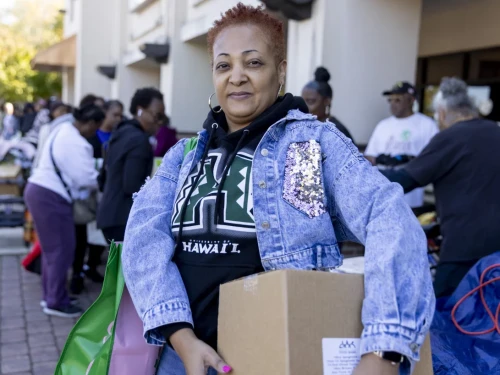The SNAP food assistance program has been dominating headlines as politicians battle over its funding. Here are five things to know about how the program works in Rhode Island.
1. SNAP enrollment is much higher than it used to be
In 2005, about 76,000 Rhode Islanders were enrolled in SNAP, and the state had one of the lowest participation rates in the country. That changed after the state launched major outreach efforts to help more people sign up.
Today, around 138,000 Rhode Islanders are on SNAP (or 13% of the population), giving the state one of the highest participation rates nationwide.
2. Enrollment varies widely by community
SNAP usage looks very different across Rhode Island.
In Woonsocket, about 26 percent of residents are on SNAP — the highest share in any Rhode Island city or town. That’s followed by Providence (23%), Central Falls (22%) and Pawtucket (20%)
By contrast, enrollment is under three percent in Jamestown, Barrington and New Shoreham (Block Island).
3. Benefits also vary widely
Here’s what SNAP benefits look like for typical households:
For a single person, the maximum gross income to qualify is $28,968 a year and the maximum monthly benefit is $298.
For a family of four, the maximum gross income to qualify is $57,728 a year and the maximum monthly benefit is $975.
4. Big changes are coming to SNAP
Under the “One Big Beautiful Bill Act,” signed by President Trump in July, new rules will take effect in the coming years.
The law increases work requirements for beneficiaries and penalizes states with high error rates in their SNAP programs.
Officials estimate this could cost Rhode Island $51 million a year starting in 2027.
5. Food insecurity is a growing problem
Even before the current crisis, experts were sounding alarms about hunger in the state.
Before the pandemic, the Rhode Island Community Food Bank served about 50,000 people a month.
Today, that number has climbed to 89,000 people a month — a record high.








